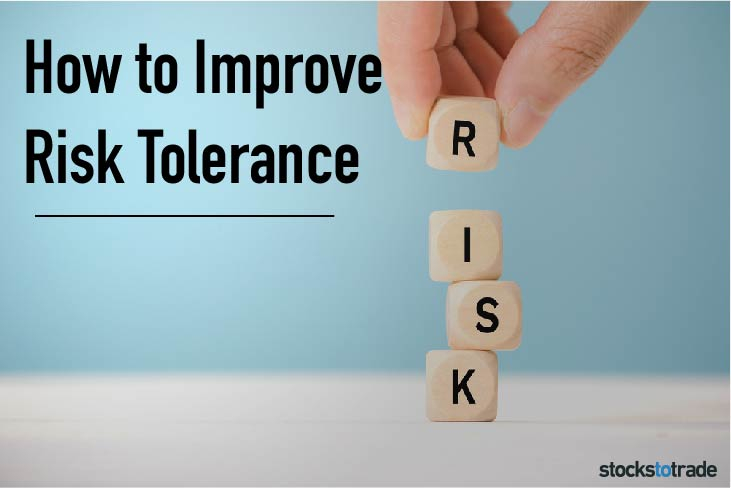Today’s topic is risky business, but not of the Tom Cruise variety. This is about how to improve your risk tolerance as a trader.
There’s a certain level of risk that’s inherent to the world of day and swing trading. Heck, it’s this risk that allows for the potential rewards that probably got you into trading in the first place, right? So it’s time to learn to embrace it.
While you might not ever love risk, it’s important to gain a certain level of comfort with it if you want to be a successful day trader. By following these tips, you can improve your risk tolerance to help you make brave and bold trading moves but still protect your bottom line.
- Seek out a proper trading education. Why do most traders fail? Because they don’t understand how the market works. Without an understanding of the market’s mechanics, you’re just gambling with your money.
Establishing a strong base of trading knowledge is the first step to becoming more comfortable with risk.
There’s no way to totally avoid risk. However, when you understand the stock market, you’ll be better able to take proactive steps to mitigate risk. When you increase your market knowledge, it can become far easier to take calculated risks versus just plain risky moves.
Download a PDF version of this post as PDF.
- Do your research. Building upon the last tip, it’s important to learn how to consistently perform research on potential trades.
The actual act of making a trade takes moments. Research takes time and effort, but the potential results can be well worth it.
You probably wouldn’t buy a vacuum without looking at the reviews, so why do so many traders buy and sell shares without so much as Googling the company in question?!
As a trader, you can’t trust stock tips or company press releases. They’re often biased and self-serving. You MUST do your own research.
Research the company in question, as well as potential catalysts. Use StocksToTrade to monitor the stock’s chart to see how it’s trending. Make a habit out of doing solid fundamental stock research. By reducing the potential risk, you can gain more risk tolerance.
- Make a trading plan. As detailed in this post, a trading plan is like a pre-plotted map of how you see your trade going. It helps you define why you’re making the trade, how it will be executed, and your exit route if things don’t go as planned.
Your trading plan allows you to make this all happen in a way that works with your personal trading style. When you have a trading plan available, you’ll have a map to follow, which means that you could be less likely to make emotional decisions in the heat of the moment, which can help reduce mistakes and overall losses.
Clearly, a trading plan can help you navigate your trades in a steady and reliable way. Your goal: to avoid the dreaded “hold and hope” mentality that so notoriously wipes out accounts.
- Don’t risk too much at one time. To improve risk tolerance, you’ve got to make the leap and risk more and more, right? No way. A better way to improve risk tolerance is to ramp up slowly, with time.
Instead of focusing on making money, focus on gaining experience. Never risk too much of your account on one trade, because you could wipe out … and then you’ll have a definite risk aversion.
Let your risk tolerance, like your trading, improve with time. Take smaller positions at first, and as your account grows, let your positions grow. If you take this slow-but-steady approach, you can gain more comfort with risking more of your capital as time goes on.
- Keep a trading journal. As much as you think you’ll remember everything that happens in every trade, you won’t. The pace is too fast and there are too many variables. A trading journal allows you to track your trades so that in time, you can use this information to gain more reliable profits.
Consider the example of Tim Grittani, who famously built a $1,500 account to over $6 million and counting. He kept a trading journal, which allowed him to figure out what methods were working and gaining him profits, and those that weren’t. With this information, he was able to hone in on the right methods and improve his win rate.**
While Grittani’s results aren’t typical, they’re a testament to the good things that can come of a trading journal.
As unpleasant as risk may be, it’s just part of the trading process. Use these steps to help you improve your risk tolerance and gain greater risk comfort. Don’t trade unprepared.
What’s your level of risk tolerance?
